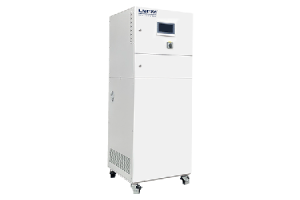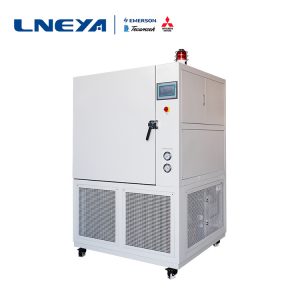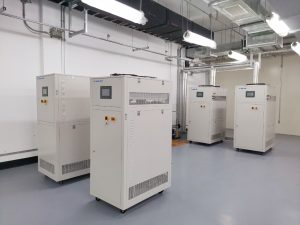Che tipo di refrigeratore è necessario per l'incisione a bassa temperatura?
The low-temperature etching process usually requires extremely high precision temperature control and strong cooling ability to maintain stable operation of the etching equipment at extremely low temperatures, in order to achieve finer etching effects and optimize the performance of semiconductor devices.
For this requirement, the applicable types of coolers mainly include:
Multi channel chiller: A chiller with multiple independent temperature control circuits that can accurately control the temperature of different parts, ensuring uniform and stable temperature throughout the entire system. This is particularly important for complex etching equipment that requires maintaining different temperatures in different regions.
Low temperature chiller: This type of cooler is designed to generate and maintain extremely low temperatures, providing cooling capacity from ambient temperature to far below freezing point, suitable for low-temperature etching process requirements such as -70℃.
Closed loop refrigeration system: The closed loop system can more effectively control temperature and reduce energy consumption, suitable for etching processes that require long-term stable low-temperature operation, while reducing the impact on the external environment.
Semiconductor specific chillers: These chillers are customized to meet the needs of the semiconductor industry and have characteristics such as high-precision temperature control, fast response, low vibration, and low noise. Some are also designed with special material heat exchangers to cope with corrosive environments.
Handheld low-temperature chiller: Although not as widely used in production lines as large chillers, handheld low-temperature coolers may also be adopted in certain specific local low-temperature control or portable application scenarios due to their flexible and convenient advantages.
Therefore, the chiller used must not only achieve the required low temperature, but also be compatible and capable of handling cooling media under such special working conditions, while also having good corrosion resistance. When choosing a cooler, factors such as energy efficiency, ease of maintenance, level of intelligent control system, and ease of integration into existing production lines should also be considered.
Customization of chiller solutions
Raccomandazioni correlate
-
Quale tipo di refrigeratore può essere scelto per il raffreddamento di XRD?
1675Quale tipo di refrigeratore per il raffreddamento di XRD?
Visualizza dettagli -
Raffreddamento industriale in Giappone: a cosa servono i chiller di processo
1101Process chillers in Japanese industry provide precise, reliable cooling for electronics, automotive, pharmaceutical, and chemical production.
Visualizza dettagli -
What are the price factors affecting 60P freezers?
1735When users choose 60P freezers, they are very concerned about the price. Then the factors affecting the price, Wuxi Guanya (LNEYA) need to make everyone understand. The freezer brand is an important intangible asset of a company or product, and is...
Visualizza dettagli -
Operating Principle of LNEYA Industrial Air Cooled Chillers
2064Industrial Air Cooled Chillers is a heatexchanger which USES air to cool the hot fluid. The hot fluid in the tube isheated through the exchange of heat between the tube wall, the fin and theoutside air, which is usually supplied by the ventilat...
Visualizza dettagli
 Refrigeratori industriali LNEYA Produttore Fornitore
Refrigeratori industriali LNEYA Produttore Fornitore















